Calaveras County History
Calaveras County’s history reflects its spectacular natural environment, first as Native American Miwok settlements, then as a major player in the California Gold Rush, and soon after, as the discovery site of giant sequoias, beautiful caves and spectacular scenery.
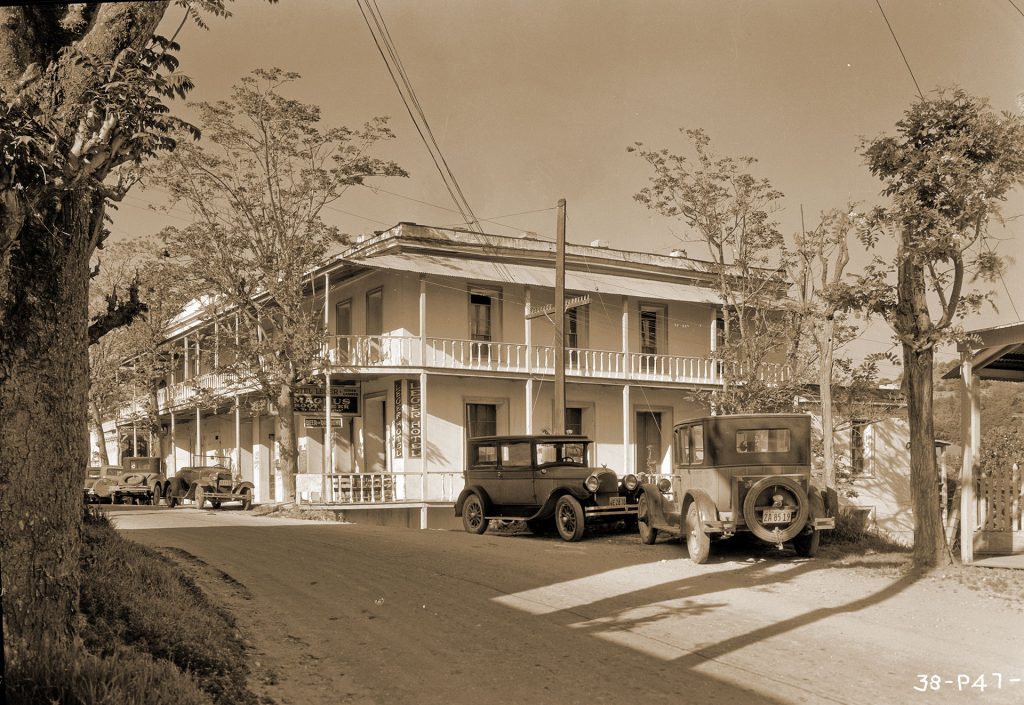
Calaveras County History: Mokelumne Hill
Founded in 1848, “Moke Hill”, as the locals call it, was among the richest of the digs. Claims in some areas were confined to sixteen square feet and many fortunes were made. It was the county seat in the early days and, although it held no exclusive rights, it was known as one of the most violent, bawdy towns in the Mother Lode.
As the gold played out, Mokelumne Hill shrunk from a wild and woolly 15,000 to the much less populated, quiet historic village that it is today. Main Street Mokelumne Hill is directly adjacent to Highway 49 between Jackson and San Andreas and is well worth a stop. Many of the original buildings are still in place and an air of Gold Rush authenticity exists. There are some fun retail shops, a library and museum, and Renegade Winery which serves up their own wine, plus brews and food.
At the heart of town is the historic Hotel Léger with its fabulous old saloon and stories about the ghostly cattle stampede in the middle of the night. Hotel Léger’s ghostly reports are so common that you can pick up a ghost hunting kit from the front desk to do a little exploring on your own.
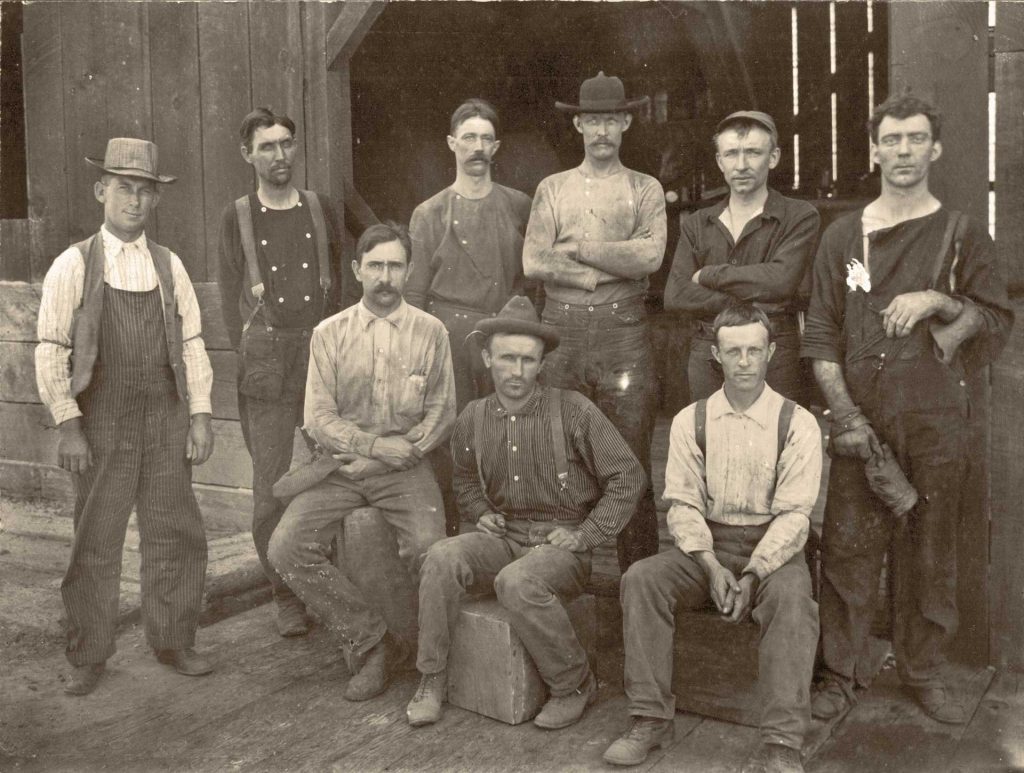
Calaveras County History: West Point
A California Historical Landmark on Highway 26 near Main Street in West Point declares that the area was named by Kit Carson as he traveled with Captain John Fremont searching for a pass over the Sierra Nevada Mountain Range.
West Point was started when a group of adventurers showed up in the 1850’s looking for gold. One writer says “West Point was, and still is, isolated and on the road to nowhere;…a somewhat rough-and ready window into life as it was before World War II”.
Hunting and fishing (there is even a trout hatchery) are good in the area and it is a great place to wander backroads for a bit of quiet. 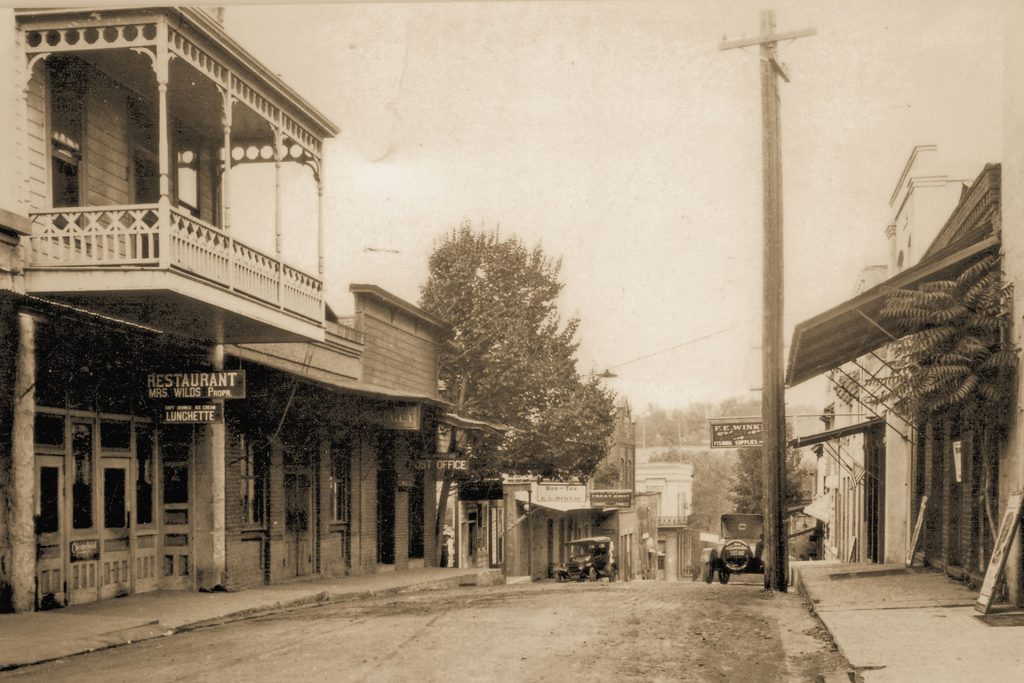
Main Street, San Andreas
Calaveras County History: San Andreas
San Andreas was settled by Mexican Gold Miners in 1848. By 1850 over 1000 tents dotted the hillsides. The first church, built in 1852 was a canvas structure with a simple cross over the door designating it a church of the Roman Catholic faith. It was named for St. Andrew (San Andreas) and the name of the town was taken from this church.
In August 1852 the large San Andreas Nugget was found in a claim just north of where the town is located and sold to the Wells Fargo company for $12,000. In 1859 over $500,000 in gold dust was shipped. The channels were producing gold, although lack of water hampered the efforts of the miners until the miner’s ditches were completed.
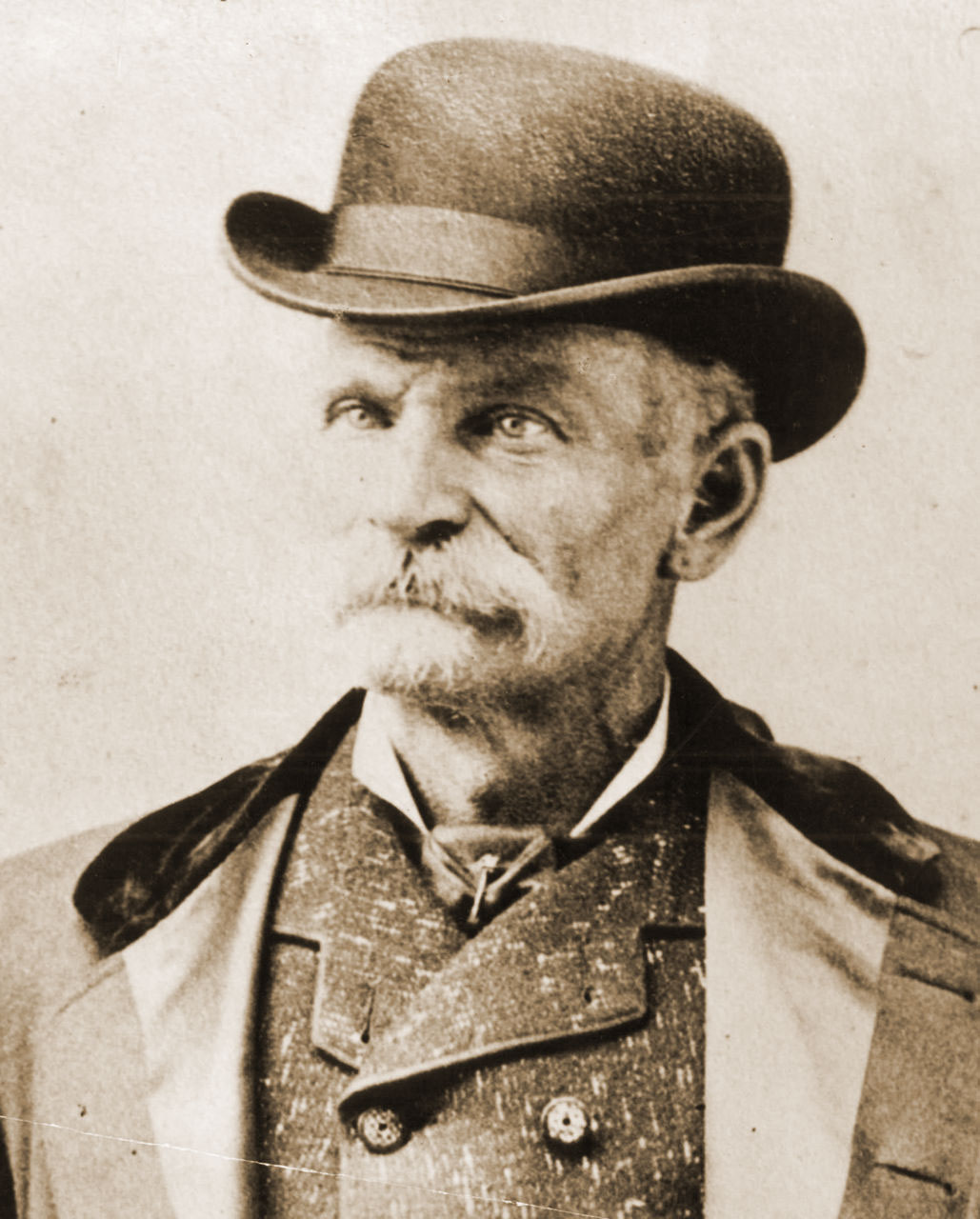
Two infamous names from the Gold Rush often tied to San Andreas, are Black Bart and Joaquin Murieta. Handsome and debonair, Black Bart was a gentleman bandit who never harmed drivers or passengers and left bits of original verse behind signed “P08”. Black Bart held up the Milton-Sonora stage at Funk Hill on November 3, 1883, leaving several articles behind in his hurried flight. One of which was a handkerchief with a laundry mark traced back to a San Francisco Laundry where the mark was identified as belonging to C.E. Bolton one of the city’s leading citizens. He was arrested and brought back to San Andreas where he confessed to the robbery. His trial was held in the court room in San Andreas and he was sentenced to six years in San Quentin Prison. The jail where he was held still stands and is a part of the Calaveras County Historical Museum Complex, which is well worth visiting.
In 1866, the County Seat was moved to San Andreas from Mokelumne Hill and in 1869, a county hospital was moved to the Gold Hill house. Today, San Andreas is a progressive community with several organizations working to improve, promote and enhance the climate and growth in the San Andreas area.
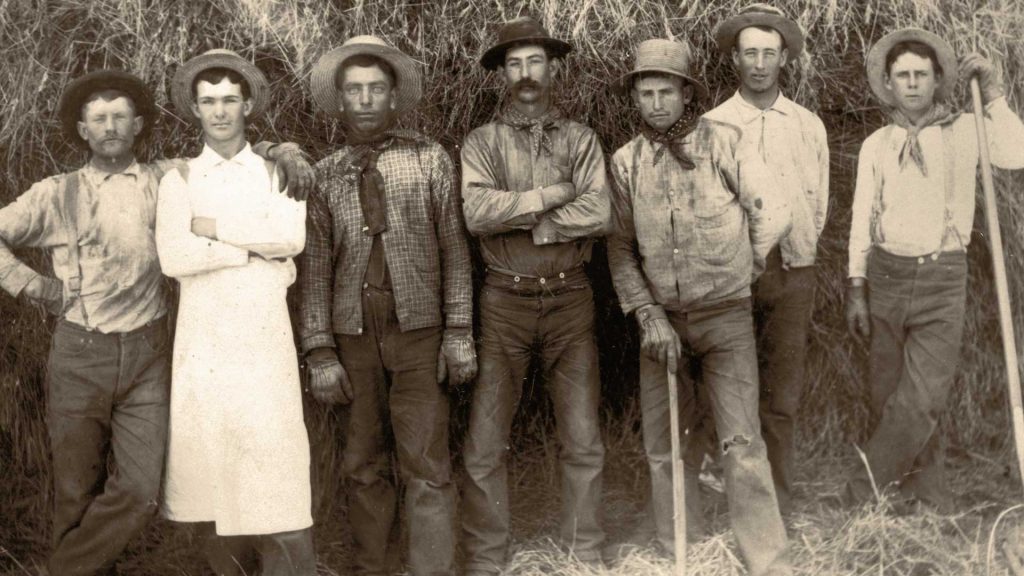
Calaveras County History: Valley Springs
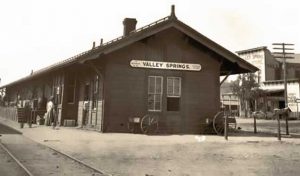
In 1885, Valley Springs was the eastern terminus for the San Joaquin and Sierra Nevada Narrow Gauge Railroad, which carried freight and passengers from the Valley and beyond. Upon arrival in Valley Springs, travelers found horses and wagons their means of transportation. But once the Southern Pacific Railroad bought the line in 1888, rail travel was extended to somewhat farther than the County Seat in San Andreas.
The rail lines have been closed for many years, but the population of Valley Springs and the businesses in the vicinity continue to grow. The old train depot is still there – and now houses a few retail shops. It’s close to the junction of 12 and 26.
The area is also a beautiful recreational destination for the tri-lakes area. Within a few miles of each other are New Hogan, Pardee, and Camanche Reservoirs where fishing, boating, camping, hiking, biking and wildlife viewing are year round activities. Learn more about Valley Springs’ history.
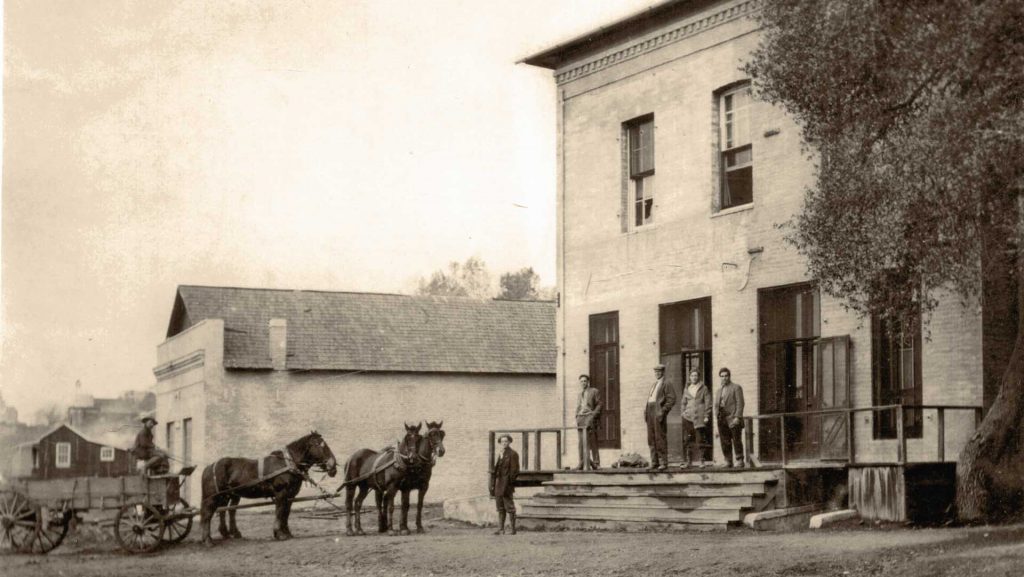
Calaveras County History: Copperopolis
The history of Copperopolis is closely tied to the Civil War. The 19 million pounds of copper mined in the 1860’s made Calaveras County second in national production of this ore. Mining, workshop sites, and other historical artifacts from this era remain alongside buildings that have been restored by the perseverance and ingenuity of some townspeople.
“Copper’s” population at its historical height was between 2,000 and 4,000, which is where the current population stands. Always a pioneer spirit, Copperopolis no longer holds claim to any working mines, but visitors and residents are drawn by the recreational attractions which include beautiful The Golf Club at Copper Valley, one of California’s top championship golf courses with its own fabulous restaurant, Verona 18, and Lake Tulloch, a year round water wonderland.
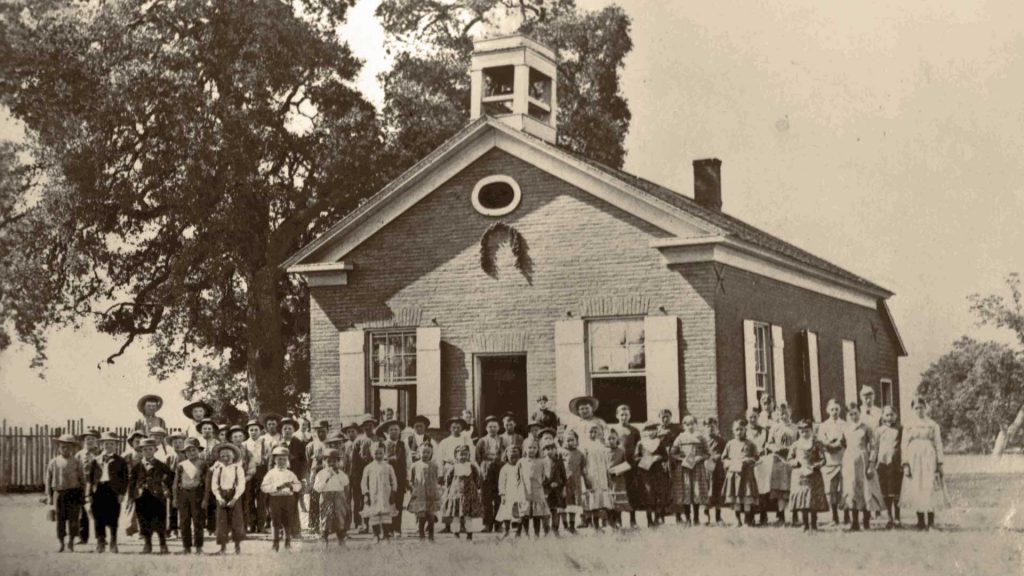
Calaveras County History: Angels Camp
Angels Camp, aka the “real” City of Angels and the only incorporated city in all of Calaveras County, was named after shopkeeper Henry Angell of Rhode Island who started a trading post here in 1848.
Several good strikes were made by early miners and within the year over 4,000 miners were working the surface gold of Angels. The source of gold played out quickly but hard rock mining kept the gold industry flourishing in Angels until recently. The town is honeycombed with tunnels from the many successful mines. Download a free Historic Angels Camp walking tour & driving map.
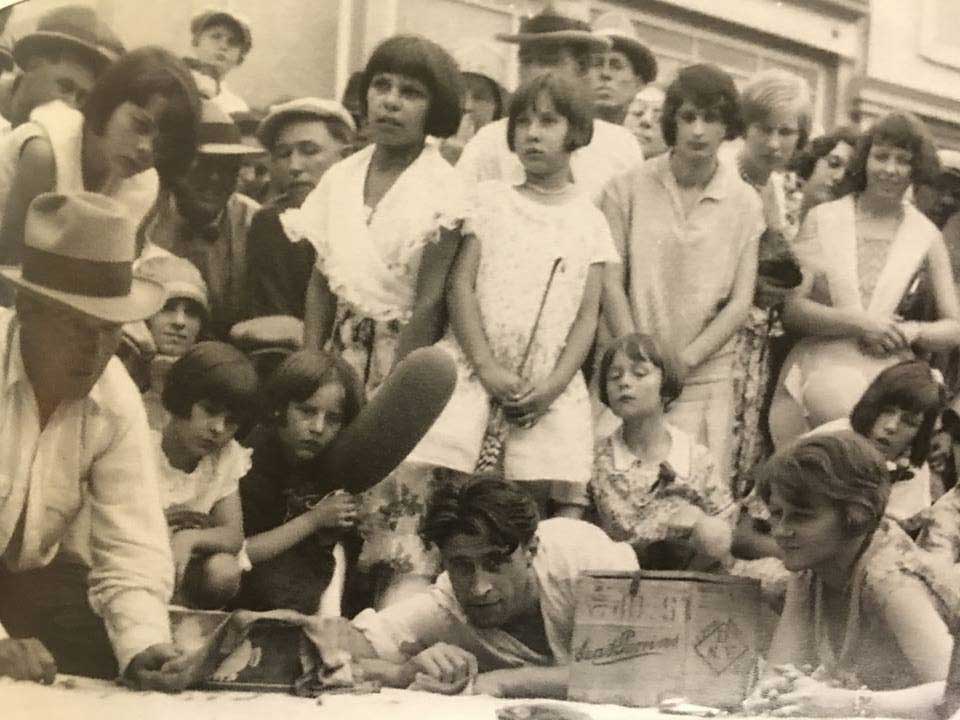
In 1864, Mark Twain wrote his first successful short story, “The Celebrated Jumping Frog of Calaveras County” and Angels Camp became linked with frogs apparently for all time. The Jumping Frog Jubilee and Calaveras County Fair is held annually the third week in May.
Angels Camp’s population today is about 3,900. Its main industry is tourism which boasts Greenhorn Creek Resort’s challenging championship golf course, restaurant and pro shop, beautiful New Melones Lake and marina with houseboat and fishing boat rentals, hiking, biking and camping, historic buildings and monuments, interesting shops and great eateries.
The Angels Camp Museum is filled with lovingly preserved artifacts from the Gold Rush era with over 3 acres of exhibits, including a collection of mining and ranching equipment, a blacksmith’s shop and one of the nation’s largest collections of carriages and covered wagons.
Calaveras History: Murphys
The picturesque village of Murphys is known today for its many natural attractions including caverns for public viewing, a charming Main Street with friendly merchants and unique shops, spectacular wineries, art galleries, and museum.
Daniel and John Murphy settled in the area in 1848 when they came overland with the emigrant party known as the Stephens-Townsend-Murphy Party. According to an article written for CalaverasHistory.org by Judith Marvin “The brothers set up a trading post, and were very successful in getting the Indians to mine (gold) for them; John even “married” a Miwok named Pokela, whose father was a local “chief.” By the time he left the camp in December 1849 to return home, John Murphy reputedly had more gold than any other man on the Pacific Coast.”
Fifteen miles up the mountain, A.T. Dowd put Calaveras on the international map when he discovered the huge groves of Giant Sequoia Redwoods. Because their fame grew so quickly, by 1855 the Sperry & Perry Hotel (now known as Murphys Historic Hotel) had been built to accommodate the multitude of travelers. The old hotel register contains names such as Mark Twain, Horatio Alger, Ulysses S. Grant, and Charles Bolton, aka Black Bart.
Murphys has a climate that closely imitates the superb Tuscan and Spanish wine regions letting vineyards here produce amazing Mediterranean varietals. There are now over two-dozen wineries that have staked their claim within a four mile radius of Main Street, all of which have unique tasting rooms and other facilities that are open to the general public. Ironstone Vineyards just a few miles from Main Street is the largest, and includes a Heritage Museum displaying many Gold Rush and native American artifacts, and the largest crystalline gold nugget ever pulled out of the Mother Lode. Not to mention beautiful vineyards you can visit or hold a special event such as Aloria Vineyards, Stevenot, Hatcher/School Street, Twisted Oak, Brice Station, and Locke Vineyards to name a few.
Nine miles east of Angels Camp off Highway 4 and offering amenities for your entire family, Murphys remains a favorite place to get away from it all.
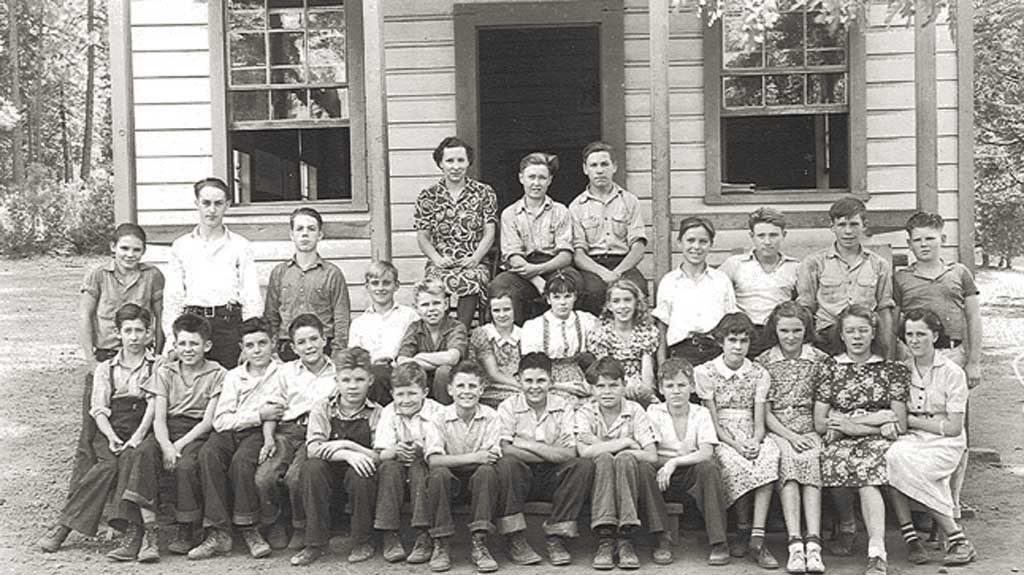
Calaveras History: Avery
A stopping off place for nearly one hundred and fifty years, Avery is today a picturesque moment on Scenic Highway 4, just eight miles east of Murphys Wine Country and twenty six miles west of great downhill and cross country skiing at Bear Valley.
The focal point of this town is the Historic Avery Hotel. Built in 1853, it is the oldest continually operating hotel in Calaveras. It was known as the “Half Way House” because of its location between the gold fields of Murphys and the giant Sequoia groves now known as Calaveras Big Trees State Park. The Avery Hotel is now available to rent for special events and weddings.
Be sure to drive through Day-O Coffee for delicious coffees, sandwiches, breakfasts and snacks. Locally owned Day’O’s servers will offer your pup a dog biscuit if they spot her through the car window. Check out Howard’s Mystic Saloon for pool and live music.
Learn more about Avery’s history from the Sierra Nevada Logging Museum, and the Calaveras County Historical Society.
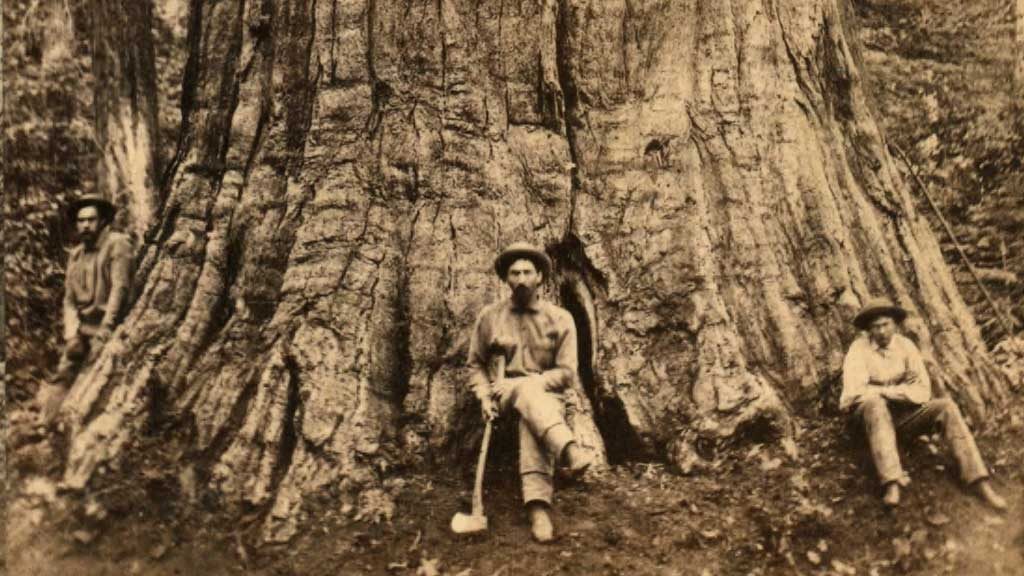
Calaveras History: Arnold, CA
During the Gold Rush era, the Arnold community was comprised of two large ranches where logging was the main and very lucrative industry. In 1927, Bob and Bernice Arnold arrived and built the Ebbetts Pass Inn and a restaurant. Their accommodations offered services to the thousands of visitors traveling from all over the world to Murphys and Angels Camp, and on to the intriguing giant redwood Sequoia groves at what is now Calaveras Big Trees State Park. Their discovery made this California’s first tourist attraction and inspired the formation of America’s National Parks system.
The town of Arnold, always holding its own, built up slowly to a current population of over 4,000. Nature is at its very finest in this area. The town is surrounded by the Stanislaus National Forest with its awe-inspiring scenery which you can explore on the 17-mile Arnold Rim Trail. Year round outdoor activities such as hiking, bicycling, off road adventures, challenging golf, great fishing on spectacular lakes, and world class winter recreation have become its life blood.
Arnold is also home to fine eateries and interesting shops and offers special events for the entire family year-round, including the Sierra Nevada Logging Jamboree, live music concerts, arts and crafts festivals, and recreational sporting events. It’s the westernmost end of the Ebbetts Pass National Scenic Byway – a spectacular route across the Sierra Nevada with spectacular views and stop-off points. Stop in at SNAC or Ebbetts Pass Sporting Goods for fishing and fire permits and outdoor adventure supplies. The Sierra Nevada Logging Museum is an excellent source of local history.
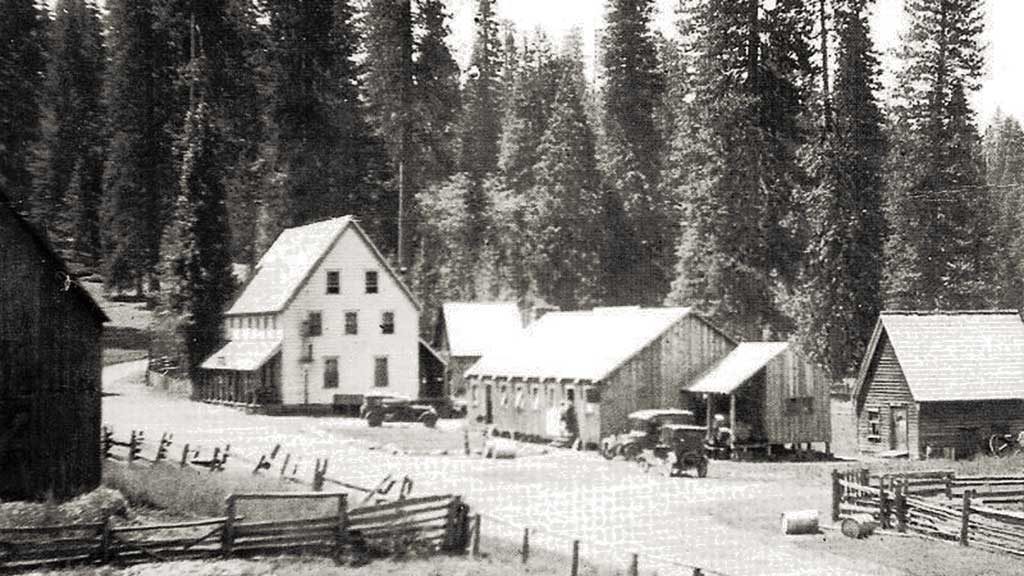
Calaveras History: Dorrington
Located about 20 miles east of Murphys and 20 miles west of Bear Valley, Dorrington has long been a place to spend the night on your way through. The Dorrington Hotel & Restaurant which is now a bed & breakfast, was built in 1860. It was a stage coach stop on the Big Trees-Carson Valley Toll Road and served as a depot for stockmen and as a summer resort for international guests visiting the giant Sequoia redwoods at Calaveras Big Trees State Park.
Noted for its ice cold spring, it was called Cold Spring Ranch until the establishment of a post office in 1902. Dorrington continues to be a beautiful place during all seasons. The Lube Room near the hotel, serves up great food, delicious brews and cocktails with beautiful views of the meadow out back. Scenic Highway 4 junctions with Board’s Crossing at Dorrington. Board’s Crossing Road will take you down to the Sourgrass Recreation Area on the Stanislaus River. Get more information on Dorrington’s history from the Sierra Nevada Logging Museum.
For more information on the history of Calaveras County, please visit these online historical resources: Calaveras County Historical Society | Calaveras Heritage Council | Calaveras Genealogical Society | Society for the Preservation of West Calaveras History | Mokelumne Hill Community Historical Trust
